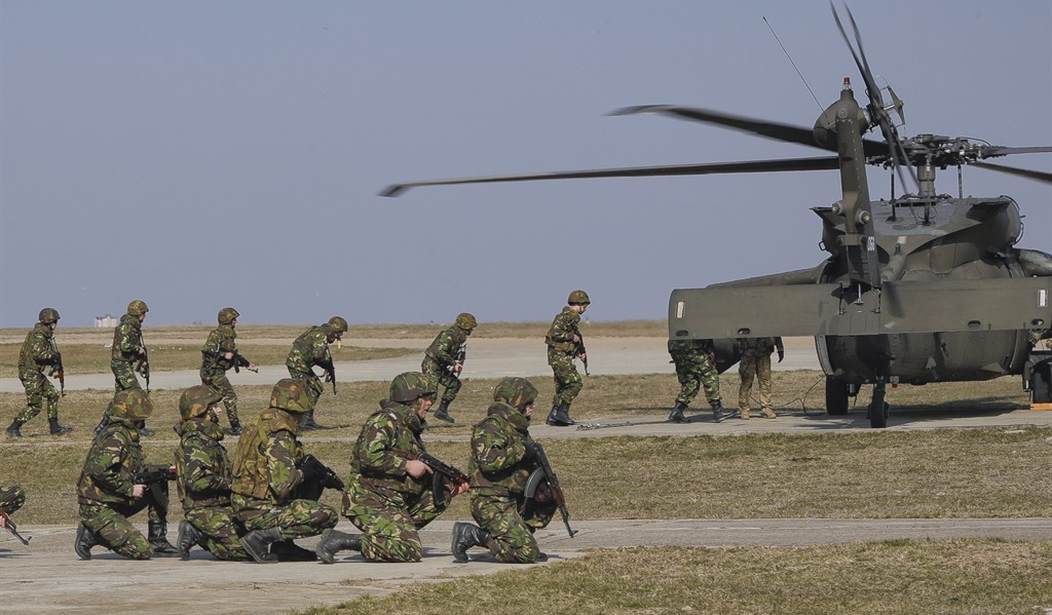We've been covering the ongoing struggles of the US military to meet its recruiting goals here for some time now, particularly the Army. Having missed their goals yet again last year, they are currently short of their target number of soldiers by many thousands. With no new influx of recruits in sight, the Army announced this week that they are deploying a new strategy to address the problem. They will eliminate roughly 24,000 positions among their ranks. If you find yourself wondering how that's going to help the Army get back to the required staffing levels, it won't. This is more of a cosmetic policy change than anything else and it's being done to make the numbers on paper look a bit less awful than they do right now. (Fox News)
As the U.S. Army struggles with recruitment, the service is cutting its force by about 24,000 in a restructuring that it says will help the service fight in future wars.
The almost 5% of jobs cut will mostly affect posts that have remained empty and not actual soldiers, according to an Army document published Tuesday.
"The Army is not asking current soldiers to leave. As the Army builds back end strength over the next few years, most installations will likely see an increase in the number of soldiers actually stationed there," the Army said.
Army spokespeople were quick to point out that they weren't discharging soldiers and sending them home. Nobody is being forced to leave. They're eliminating positions, not people. Nearly all of those positions are currently empty and many have been empty since the service's recruiting efforts began to tank.
Most of the eliminated positions involve counterinsurgency forces. They were used heavily during the wars in Iraq and Afghanistan, but the Army claims that those forces are "not in high demand today." I don't want to second-guess the experts here, but it feels like counterinsurgency might be a fairly high priority in the middle of a proxy war and an invasion on our southern border. The military's own dictionary defines counterinsurgency as "the totality of actions aimed at defeating irregular forces." We certainly seem to be going up against some "irregular forces" at the moment, particularly in the form of the Houthis.
The Army is adjusting its expectations to more modest levels. The service is currently structured to have 494,000 soldiers but its force level has shrunk to 445,000. In a compromise, they are now hoping to reach 470,000 soldiers by 2029. That will be the smallest force that the US Army has on call in many years and it's happening at a time when multiple wars are either taking place or threatening to erupt around the world.
The Army Times looked at this problem a couple of years ago and published a few possible solutions to the recruitment shortfalls. One suggestion was to send more and better people to their recruiting units. It's common knowledge among soldiers that the path to advancement runs through combat units and tactical commands. Increase the promotions and benefits for recruiters and you'll probably get better and more motivated people to apply.
They also suggested that the Army needs to bring its recruitment software systems and tools into the 21st century. Proposals to do so were brought forward in 2018, but they have yet to come to fruition. The old method they currently use relies too much on campus interviews and human legwork. They aren't reaching enough prospects. And finally, the Army rejects too many aspiring recruits for failing to meet the basic physical standards. They suggested developing and expanding programs where recruiters can guide applicants into physical training programs that will get them in good enough shape to enlist.
Those are all good suggestions, but the US military has traditionally been very slow to adapt and evolve. These recruiting failures are rapidly turning into a crisis situation that needs to be addressed. We need new people at the top of the command chain who will prioritize these types of improvements. Relying on doing things the way we've always done them out of habit simply isn't going to cut it.







Join the conversation as a VIP Member